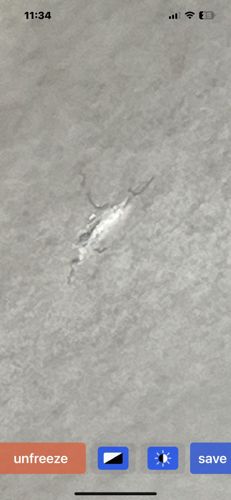Silverfish
Scientific Name: Lepisma saccharina
Order & Family: Order: Zygentoma, Family: Lepismatidae
Size: Typically 13-25 mm (0.5-1 inch) in length, excluding their long antennae and three tail-like appendages.

Natural Habitat
Silverfish prefer cool, damp, and dark places. They are commonly found indoors in homes, libraries, museums, and commercial buildings. Typical hiding spots include bathrooms, kitchens, basements, attics, storage boxes, wall voids, and electrical outlets.
Diet & Feeding
Silverfish are detritivores, meaning they feed on detritus, which includes carbohydrates and starches. Their diet commonly consists of items like paper, glue, book bindings, sugar, hair, dandruff, cotton, linen, silk, and dead insects. They are known to eat through textiles and can cause damage to household goods.
Behavior Patterns
As detritivores, silverfish are mostly active at night and tend to avoid light. They move quickly and have a distinctive "fish-like" wiggling motion, which is how they get their common name. They are known to shed their skin multiple times throughout their lives. They are attracted to damp, dark, and humid environments and often infest paper, books, textiles, and food items. They can live for several years.
Risks & Benefits
Potential risks: Silverfish are considered household pests. They can cause damage by consuming paper products, books, photographs, textiles (like clothing and carpets), and food items. While they do not transmit diseases or bite humans, their presence can be indicative of dampness problems in a dwelling, which can lead to mold and other issues. Potential benefits: In some ecological contexts, they contribute to decomposition processes in their natural habitat, but their role indoors is primarily as a nuisance pest.
Identified on: 8/31/2025